
Biceps femoris What Is It, Location, Action, and More Osmosis
The biceps femoris tendon attaches the muscle bellies of the long and short heads of the biceps femoris muscle to the head of the fibula. This insertion site allows the biceps femoris muscle to be able to: - flex the leg at the knee joint; - laterally rotate the leg at the knee joint while this joint is held in a semiflexed position.
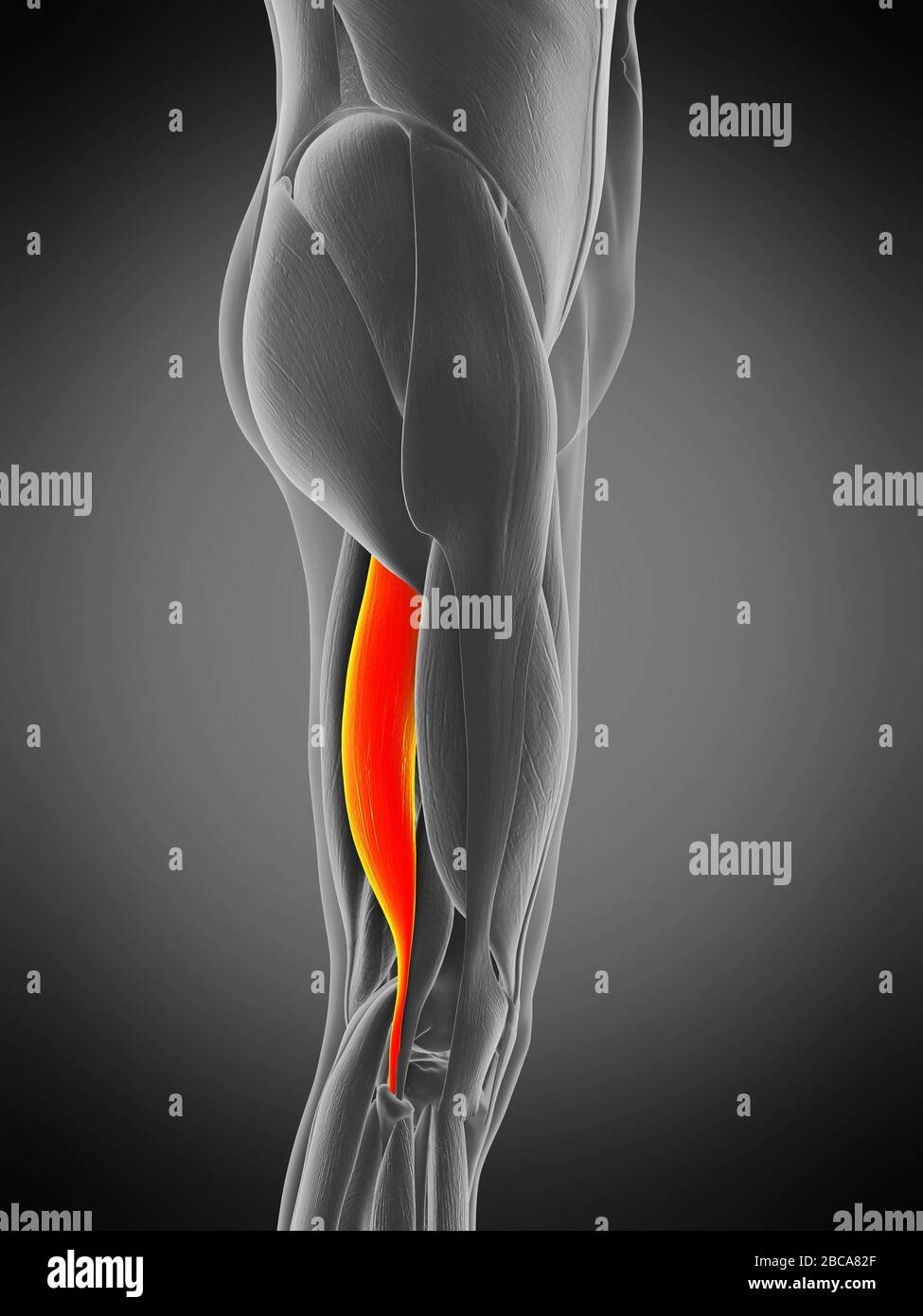
Biceps femoris longus muscle, illustration Stock Photo Alamy
The biceps femoris ( / ˈbaɪsɛps ˈfɛmərɪs /) is a muscle of the thigh located to the posterior, or back.
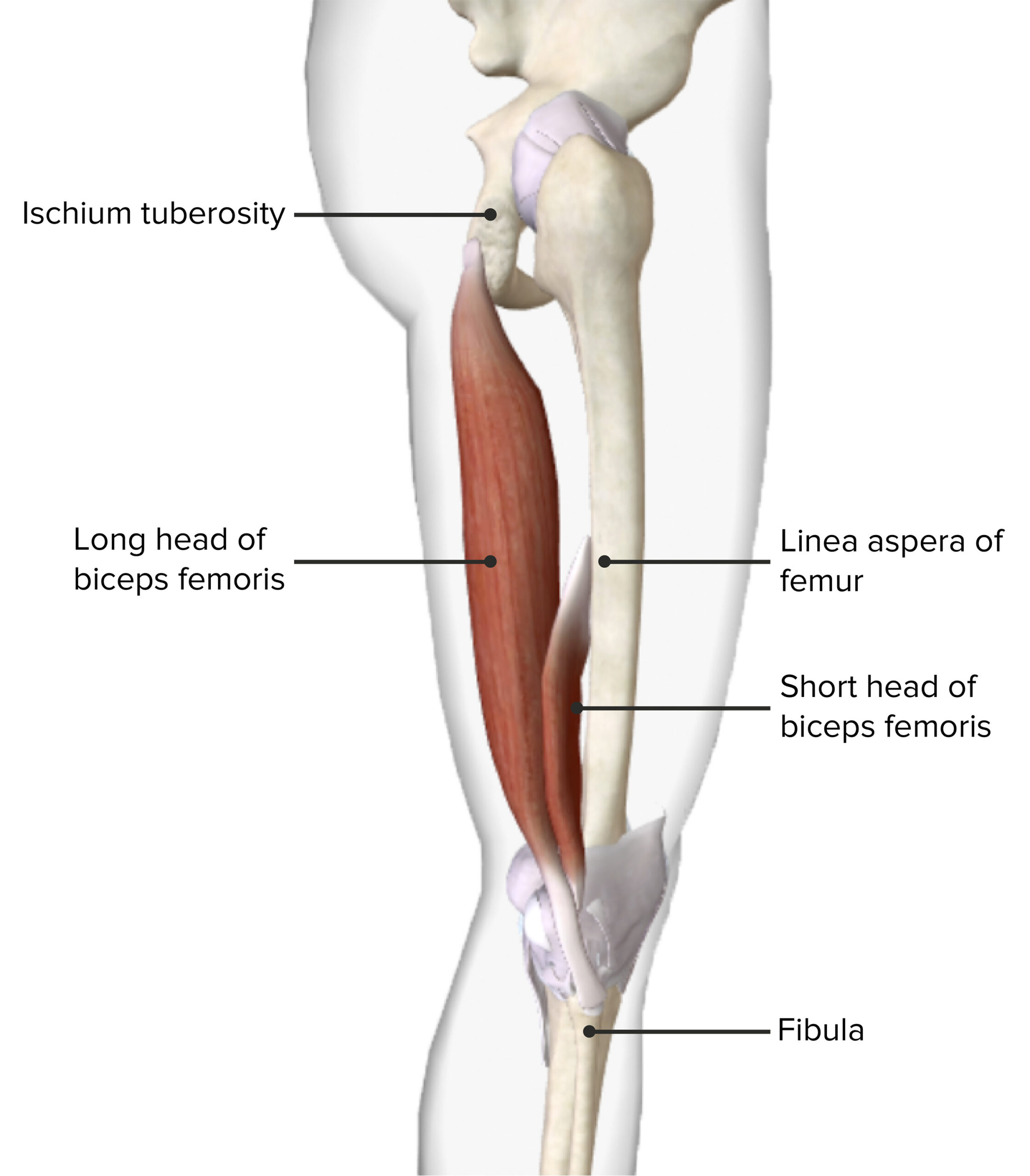
Thigh Anatomy Concise Medical Knowledge
Description Biceps femoris is a muscle of the posterior compartment of the thigh, and lies in the posterolateral aspect. It arises proximally by two 'heads', termed the 'long head' (superficial) and the 'short head' (deep). It is part of the hamstrings. [1] Anatomy Origin Long head: ischial tuberosity [3]
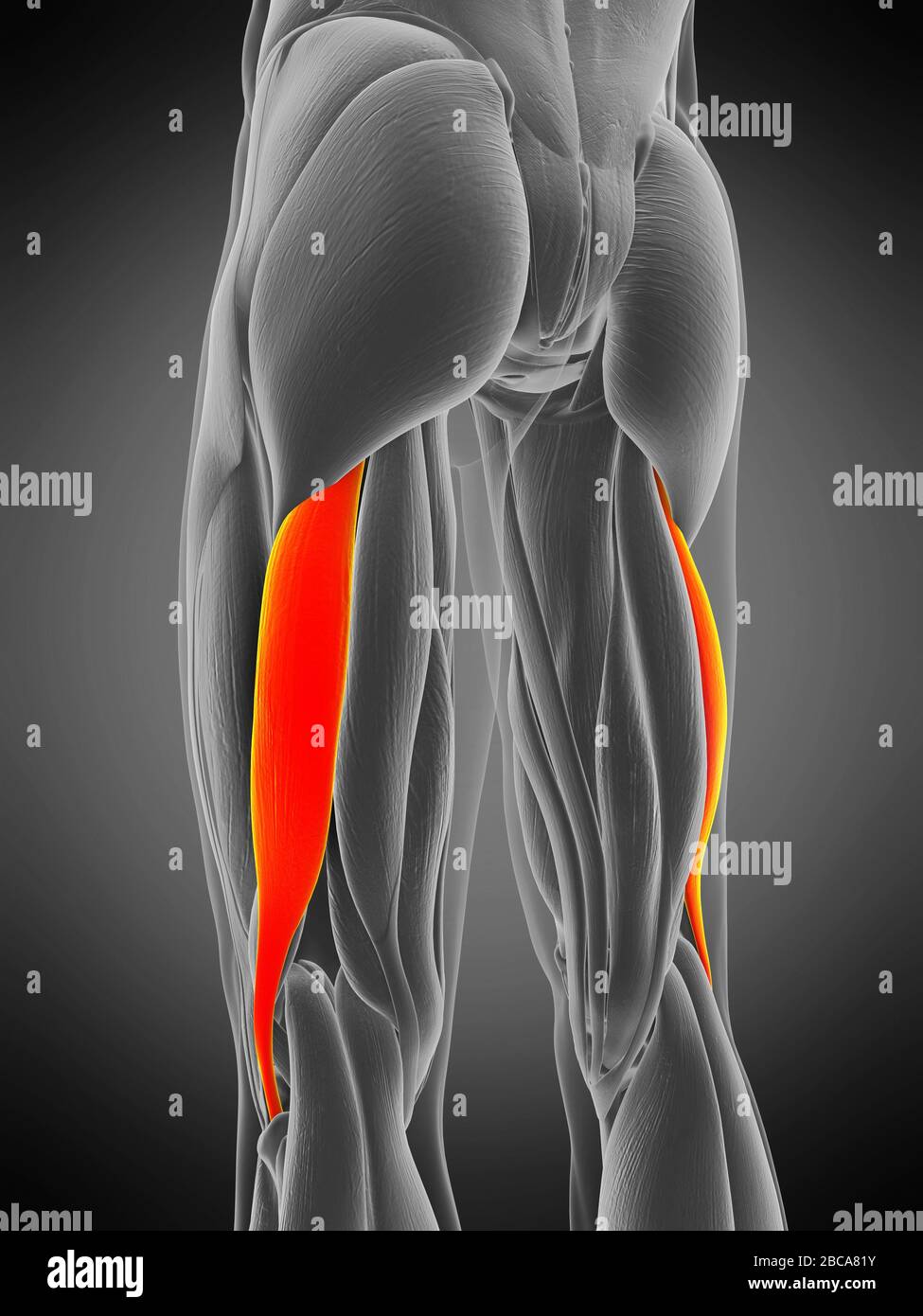
Biceps femoris longus muscle, illustration Stock Photo Alamy
The biceps femoris is a double-headed muscle located on the back of thigh. It consists of two parts: the long head, attached to the ischium (the lower and back part of the hip bone), and the.

Biceps femoris longus muscle, illustration Stock Image F029/5137 Science Photo Library
The biceps femoris is a long muscle in the posterior compartment of the thigh responsible for movement at both the hip and knee joints. Along with the semitendinosus and semimembranosus, the biceps femoris makes up the hamstrings muscle. The muscles of the hamstring border the popliteal fossa, which is a triangular space behind the knee.

Biceps fémoral Photo Stock Alamy
Overall, the biceps femoris muscle contributes to the formation of the popliteal fossa, where the muscle and tendon form its superolateral boundary. The term "hamstrings" is the collective name given to the long head of biceps femoris, semitendinosus, and semimembranosus muscles. These three muscles share similar features, including:
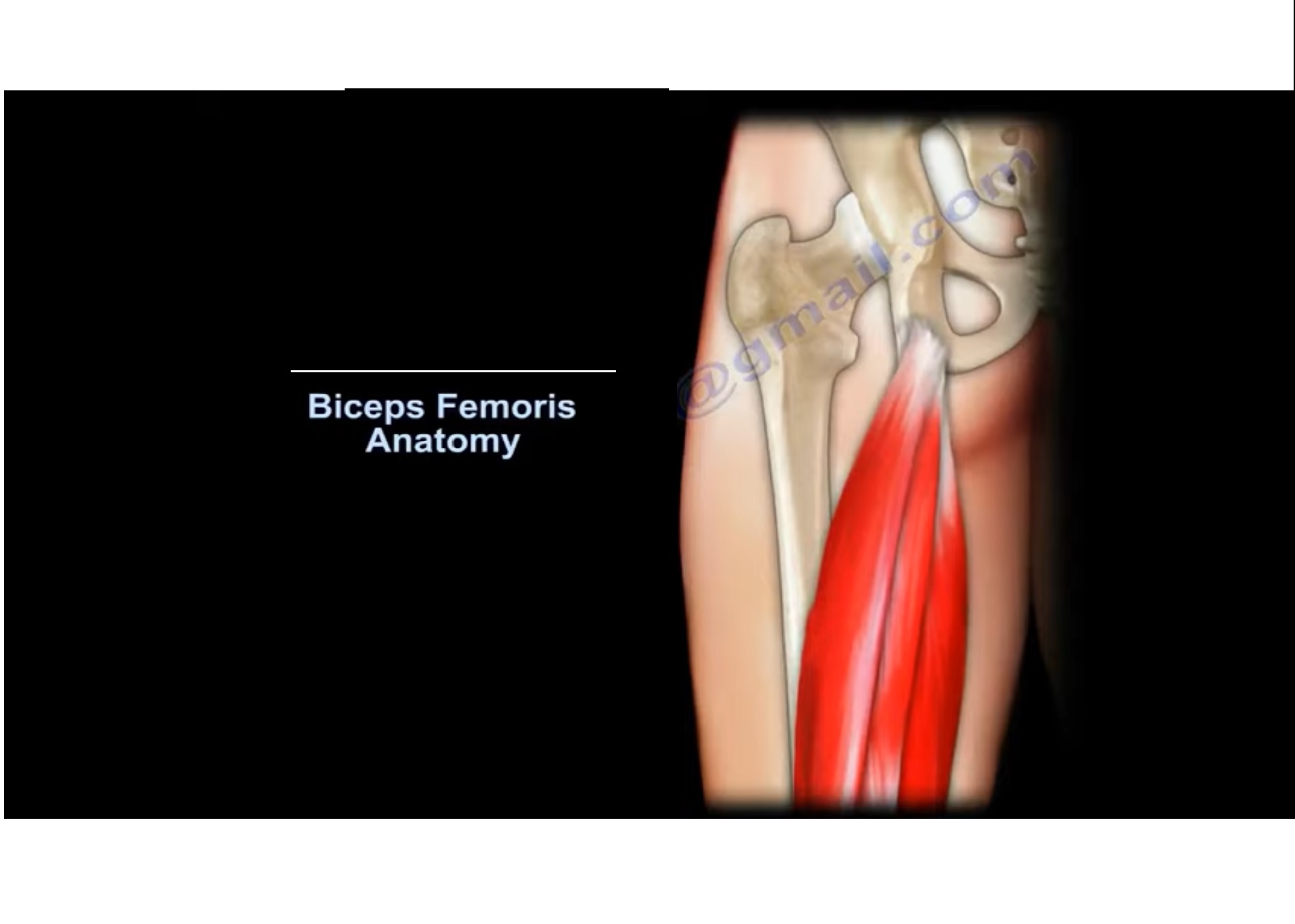
Anatomy of Biceps Femoris —
Biceps femoris is a separate name that indicates not one but several muscles located on the back of the thigh. The biceps femoris has two heads - a long and a short one, which together form a muscle that works to flex the lower leg in the knee joint, and turn the thigh in and out.
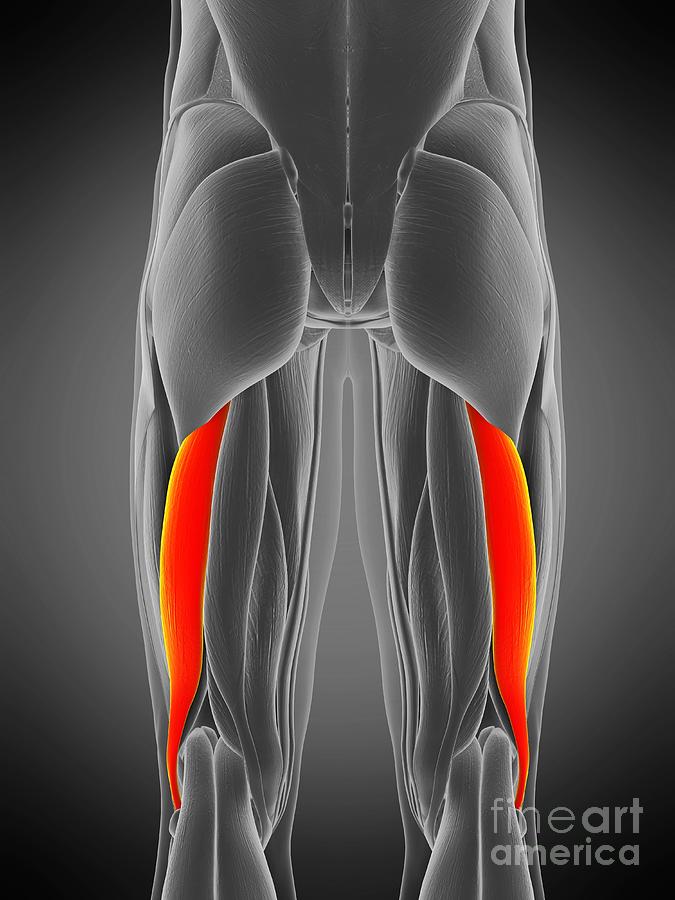
Biceps Femoris Longus Muscle Photograph by Sebastian Kaulitzki/science Photo Library Fine Art
Dr. Ebraheim's educational animated video describes the condition of biceps femoris muscle anatomy.Follow me on twitter:https://twitter.com/#!/DrEbraheim_UTM.

Pictures Of Biceps FemorisHealthiack
Key Features & Anatomical Relations Actions & Testing List of Clinical Correlates References Quick Facts Origin: Ischial tuberosity. Insertion: Head of fibula. Action: Flexes and laterally rotates leg at knee joint; extends thigh at hip joint. Innervation: Tibial division of sciatic nerve (L5-S2).

Biceps Femoris Anatomy Origin, Insertion & Action YouTube
Der Musculus biceps femoris (zweiköpfiger Oberschenkelmuskel) ist ein zweigelenkiger Muskel an der Rückseite des Oberschenkels. Gemeinsam mit dem M. semimembranosus und dem M. semitendinosus bildet der die ischiocrurale Muskelgruppe, die sowohl auf das Kniegelenk als auch auf das Hüftgelenk wirkt. Inhalt Verlauf und Versorgung Funktion Klinik
:background_color(FFFFFF):format(jpeg)/images/library/12929/Biceps_femoris_muscle.png)
Biceps femoris Origin, insertion, innervation, function Kenhub
The biceps femoris is the most lateral of the muscles in the back of the thigh, i.e., it is the closest to the outer side of the leg. The muscle is innervated by two different divisions of the sciatic nerve: the common fibular division (which is also called the common peroneal nerve) and the tibial division.
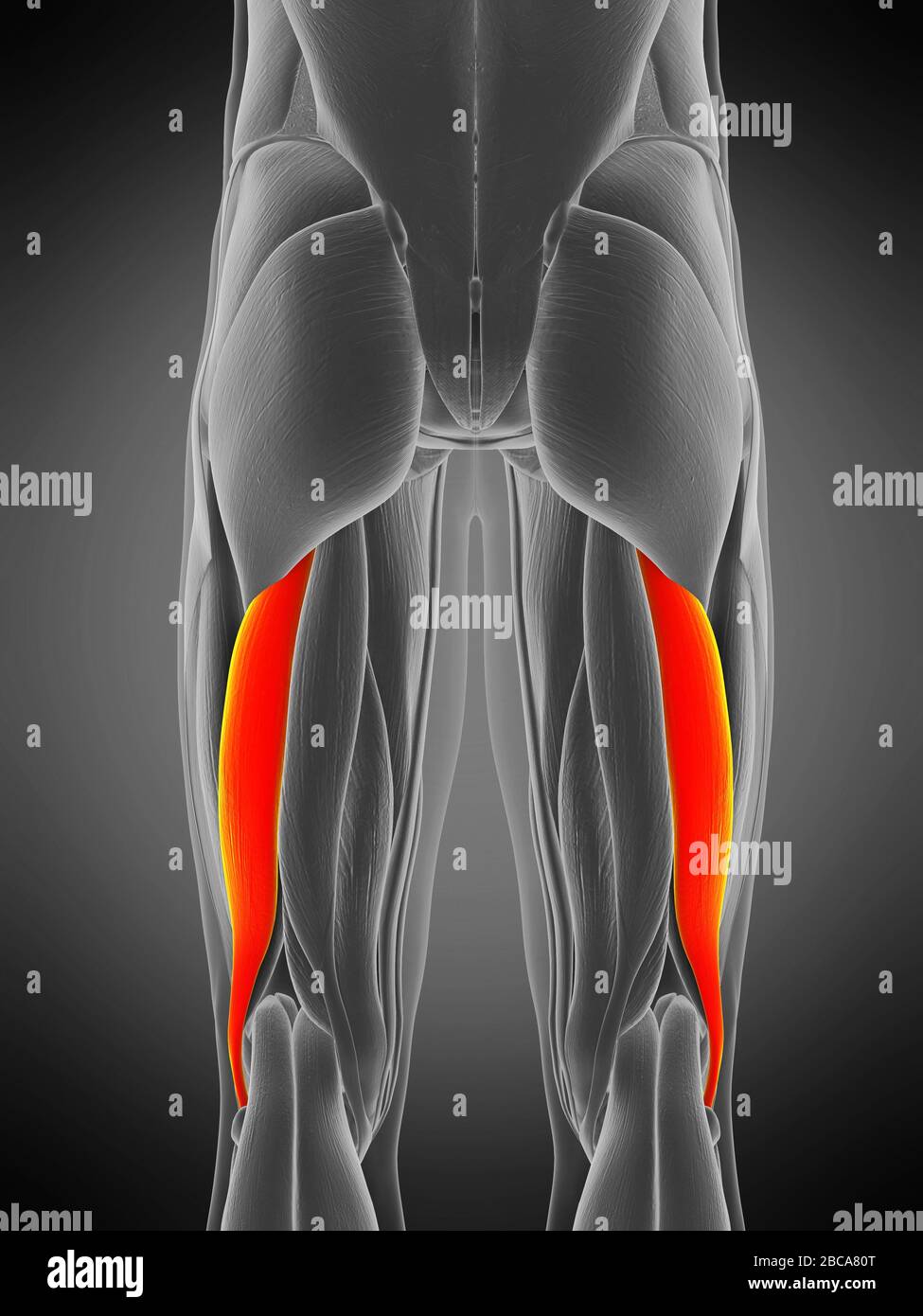
Biceps femoris longus muscle, illustration Stock Photo Alamy
Description: The Biceps femoris ( Biceps) is situated on the posterior and lateral aspect of the thigh. It has two heads of origin; one, the long head, arises from the lower and inner impression on the back part of the tuberosity of the ischium, by a tendon common to it and the Semitendinosus, and from the lower part of the sacrotuberous.

Muscle Breakdown Biceps Femoris
⭐ Biceps Femoris Muscle ⭐💪 Origin (long head): Ischial tuberosity💪 Origin (short head): Linea aspera and the lateral supracondylar line of the femur💪 Inse.
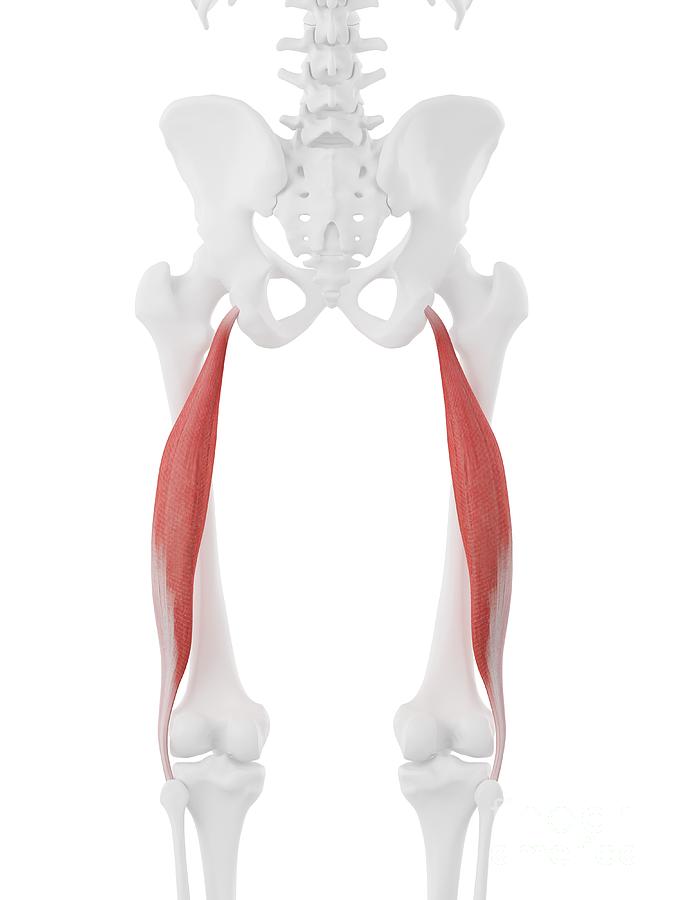
Biceps Femoris Longus Muscle Photograph by Sebastian Kaulitzki/science Photo Library Pixels
Biceps femoris is a long muscle of the posterior aspect of the thigh. Together with the semitendinosus and semimembranosus muscles, it makes the group of muscles commonly known as the hamstrings. The biceps femoris muscle runs from the ischial tuberosity, all the way to the proximal part of the fibula.

Anatomical model showing the biceps femoris muscles Stock Photo Alamy
What is the Biceps Femoris? In more technical terms, the biceps femoris is a two-headed (hence "biceps") skeletal muscle, with one superficial head and the other being far deeper in the leg. The origin point is in the femur, while the distal attachment point lies in the fibula of the calves.
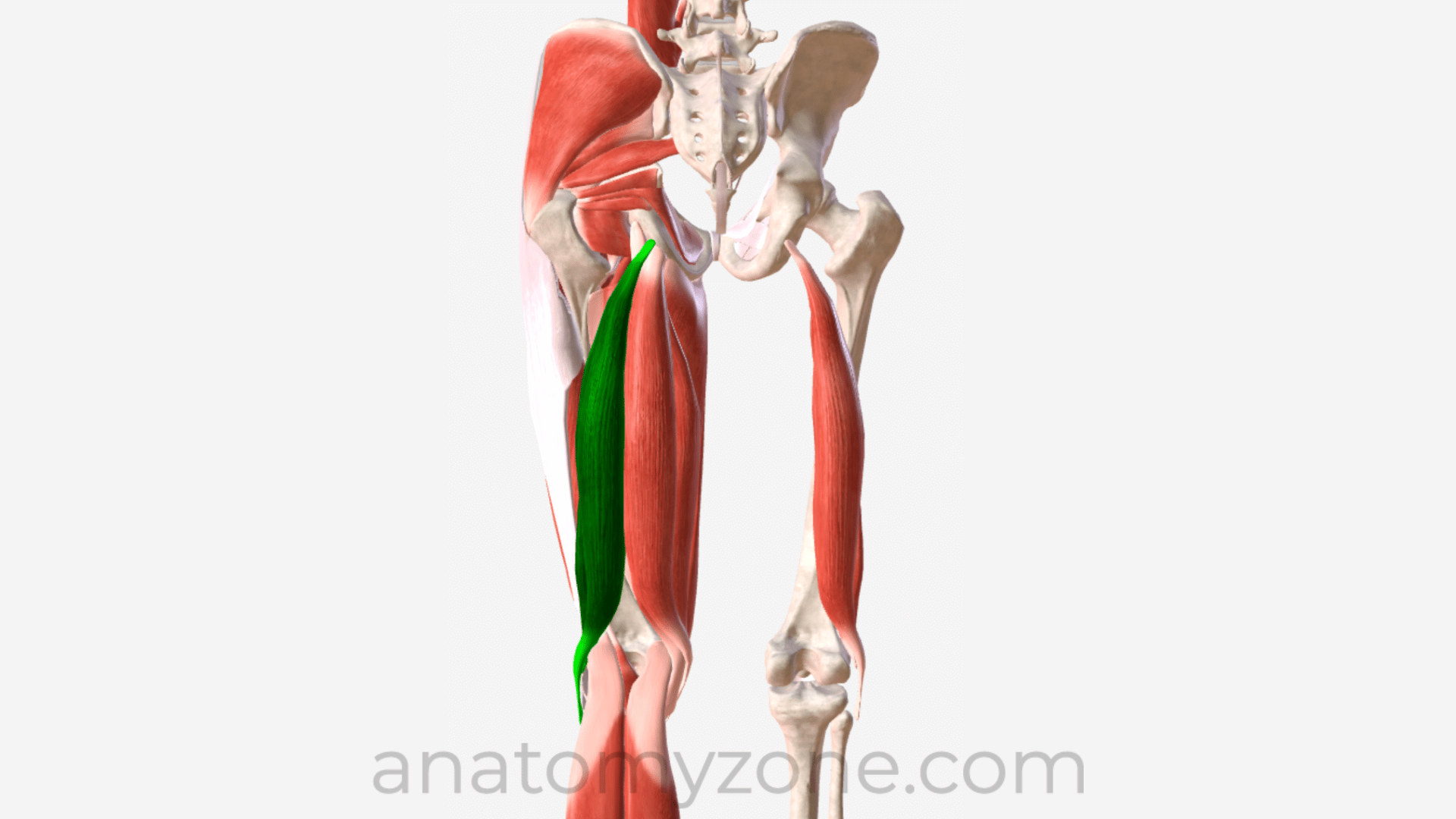
Biceps Femoris Origin, Insertion, Action, 3D Model AnatomyZone
The biceps femoris is a muscle within the posterior compartment of the thigh. It has two heads (long head and short head) and is the most lateral of the muscles in the posterior thigh. The common tendon of the two heads can be felt laterally within the popliteal fossa (posterior knee region). Attachments :